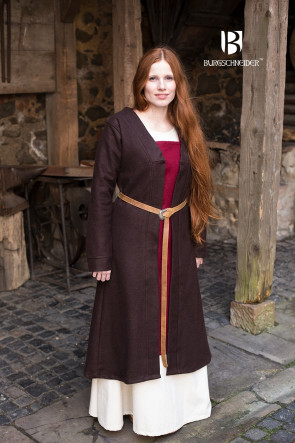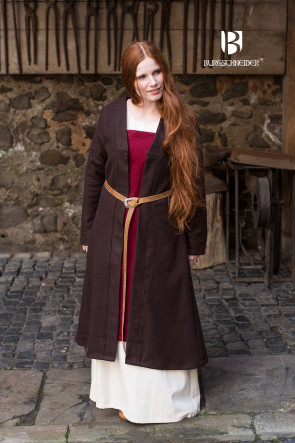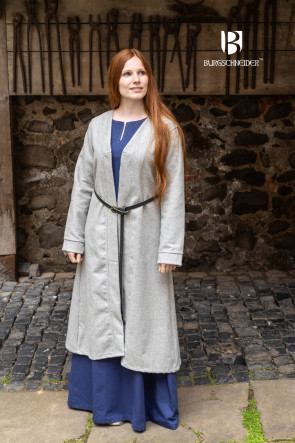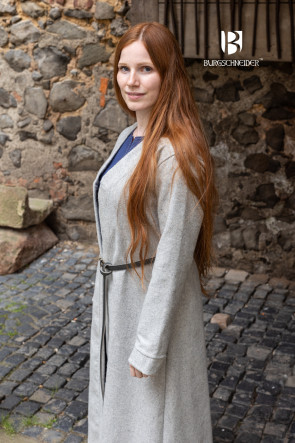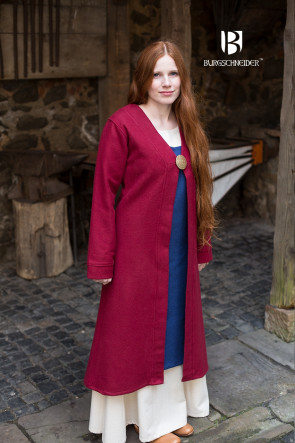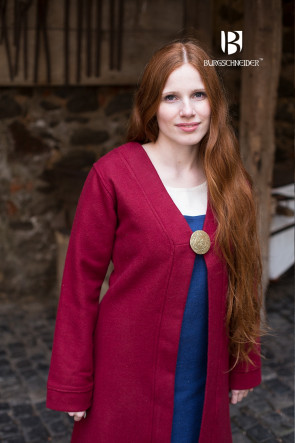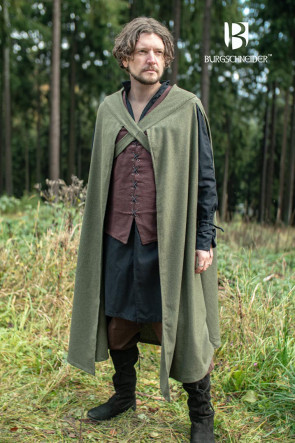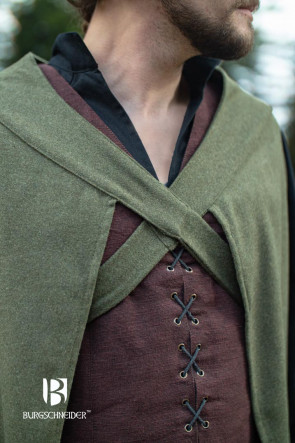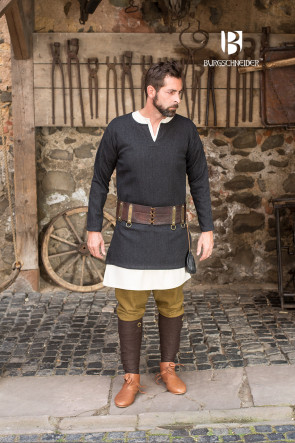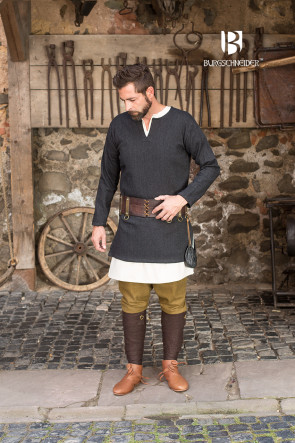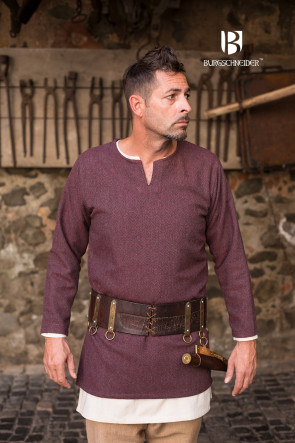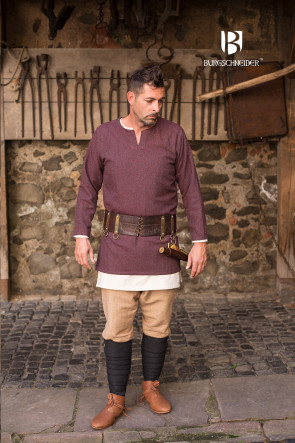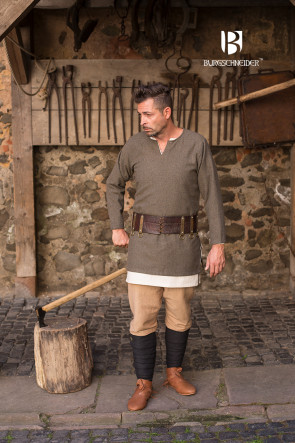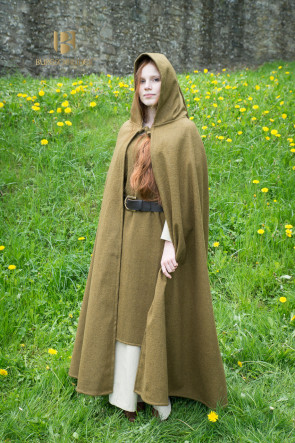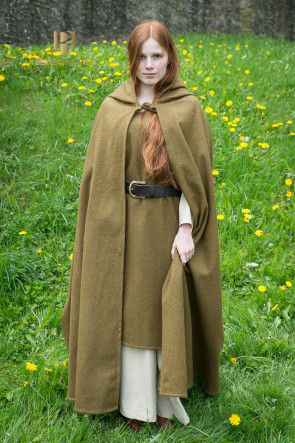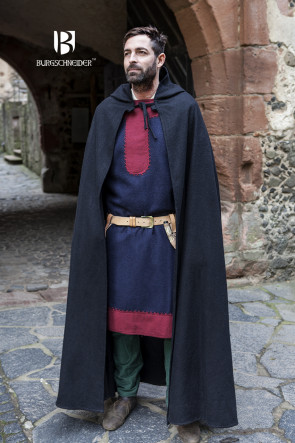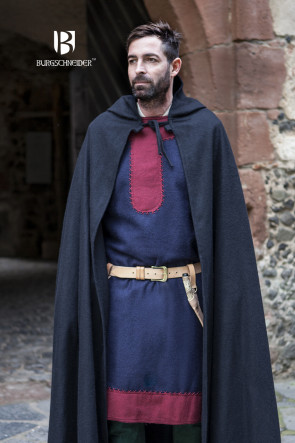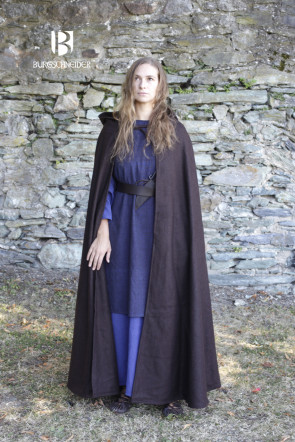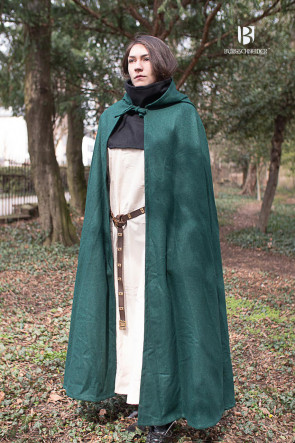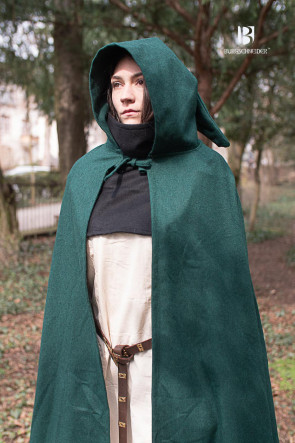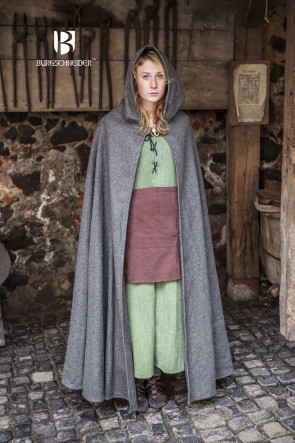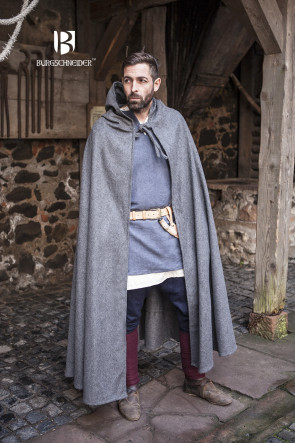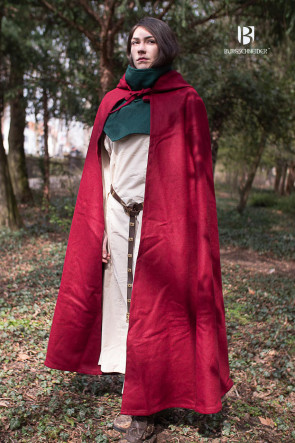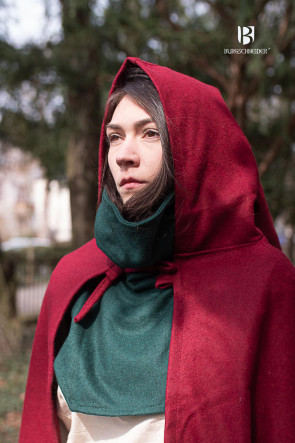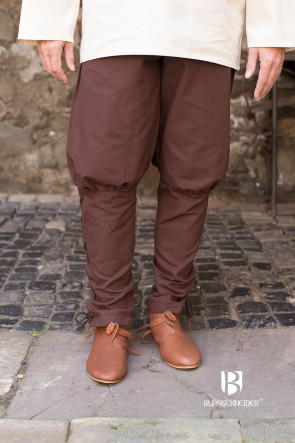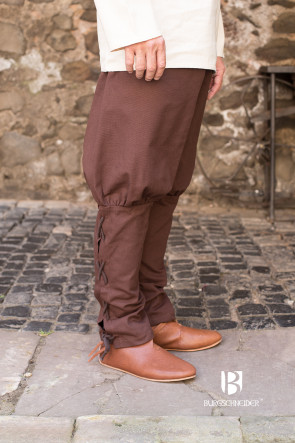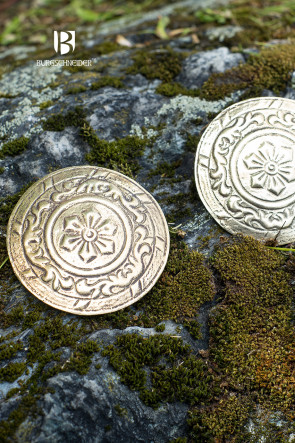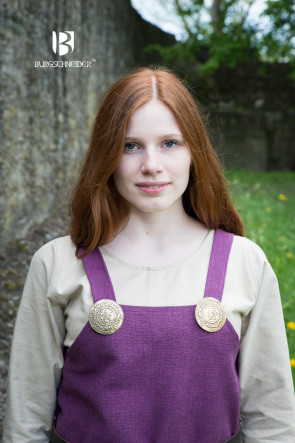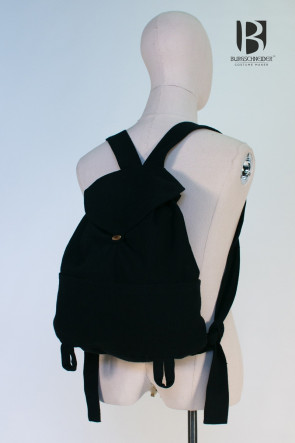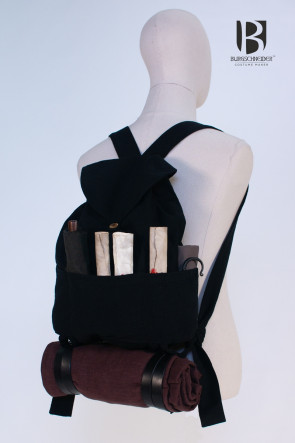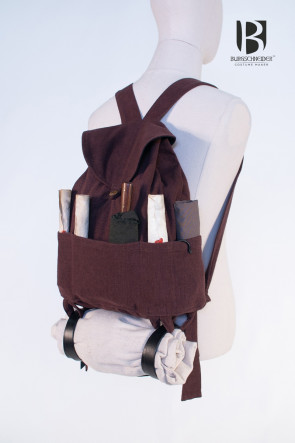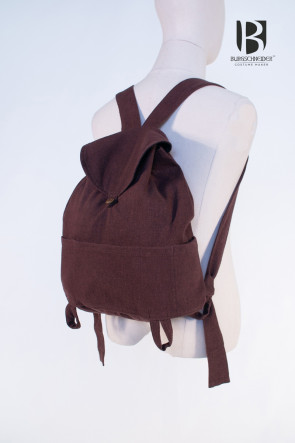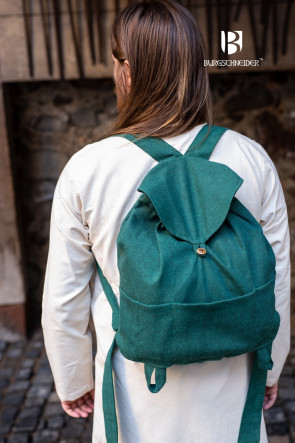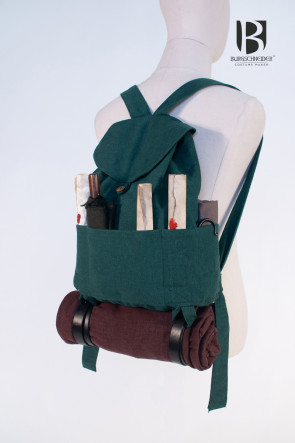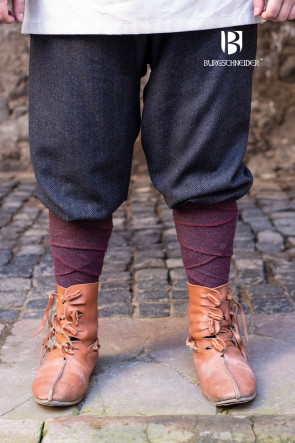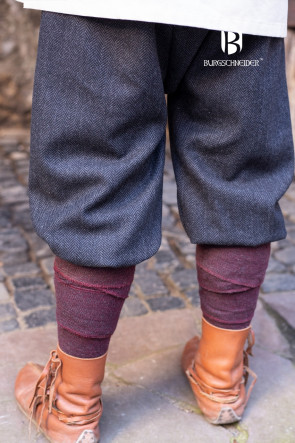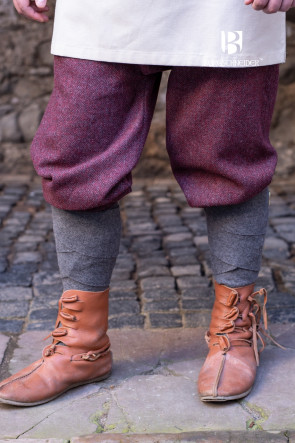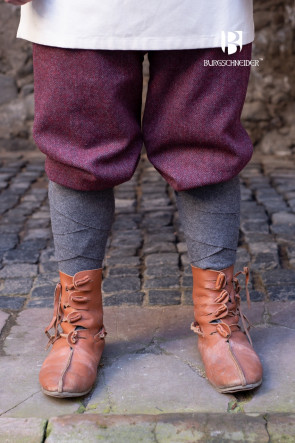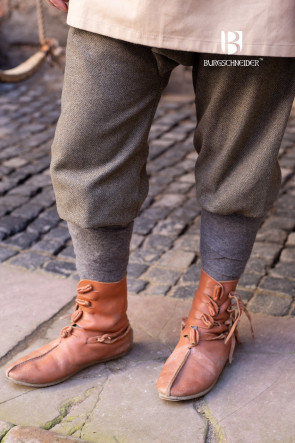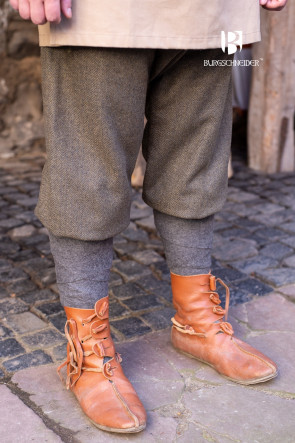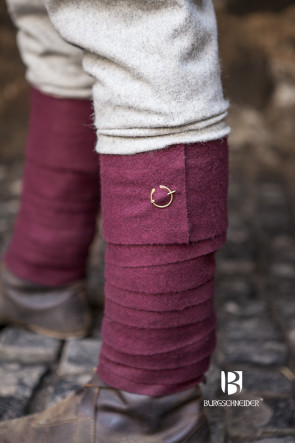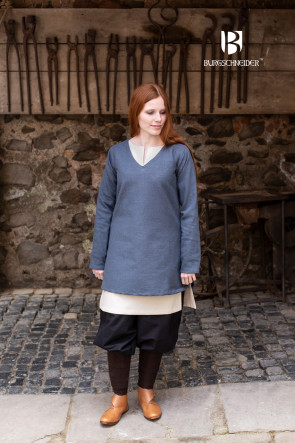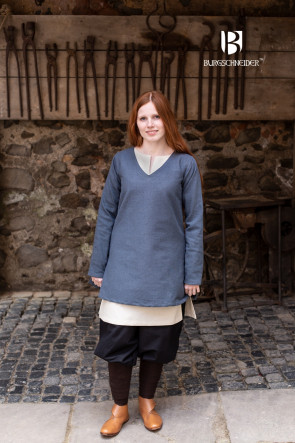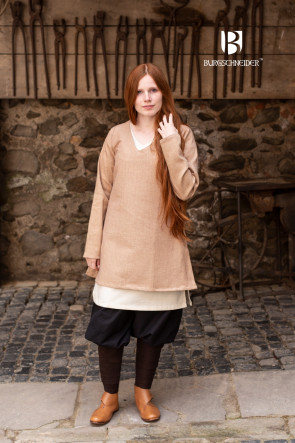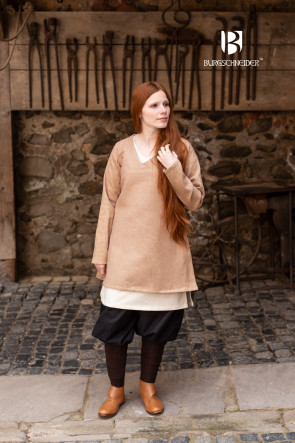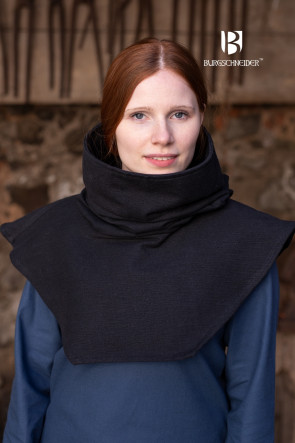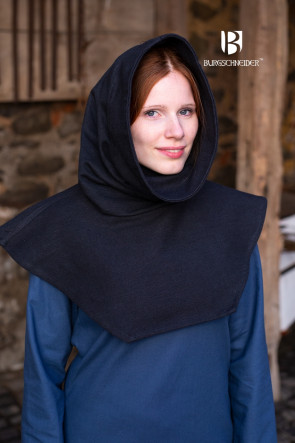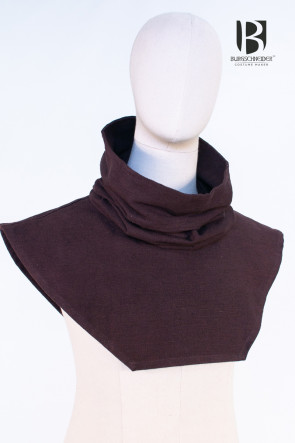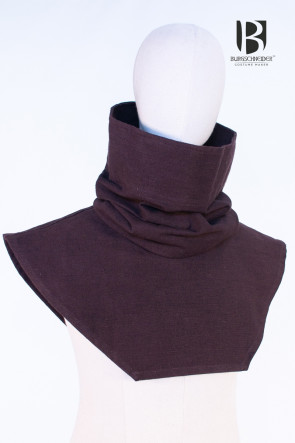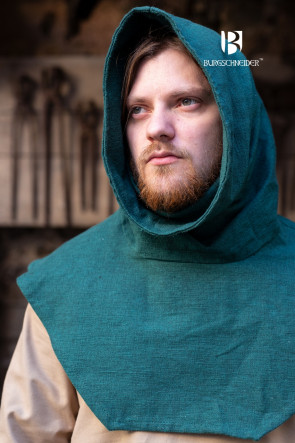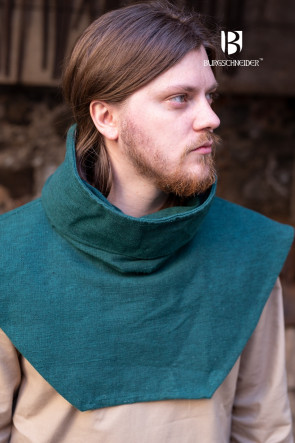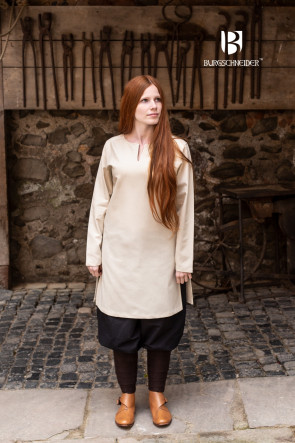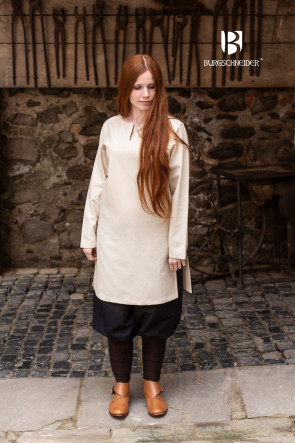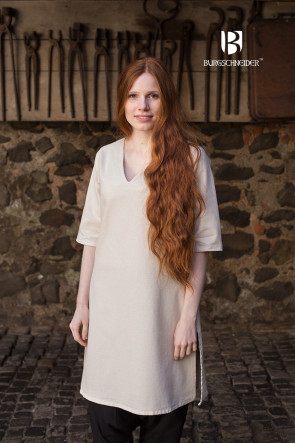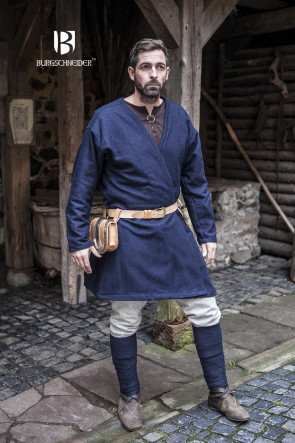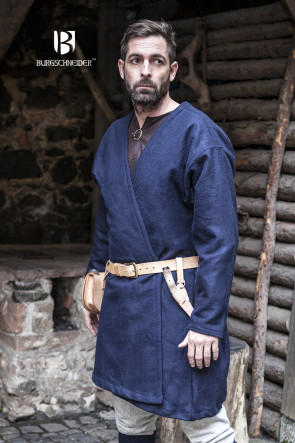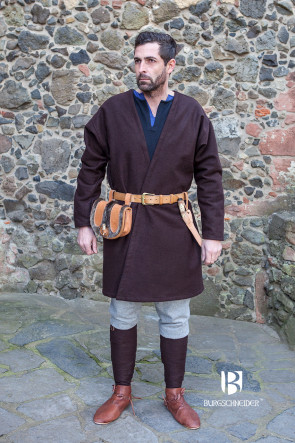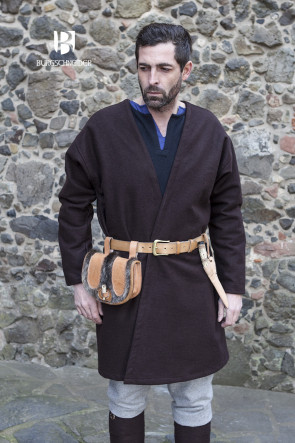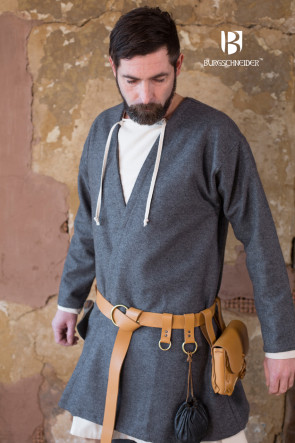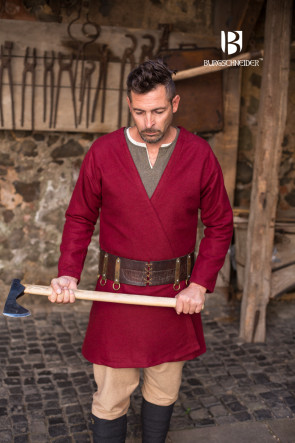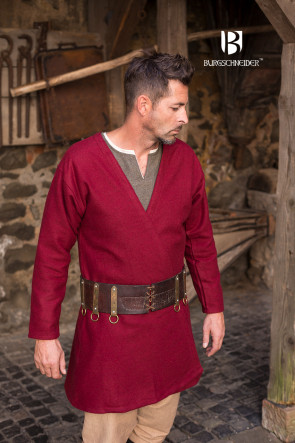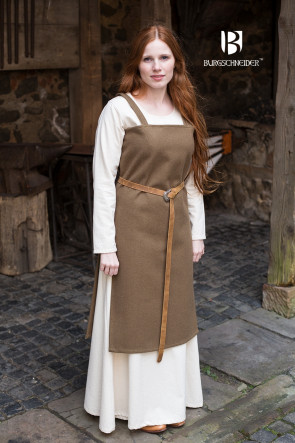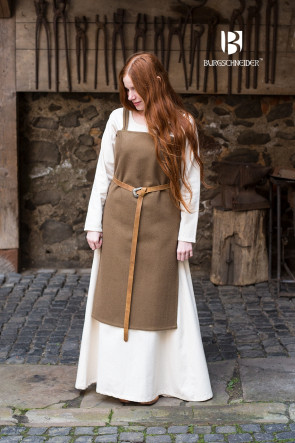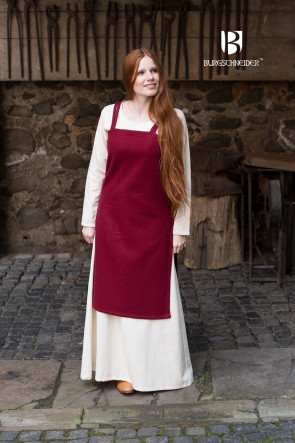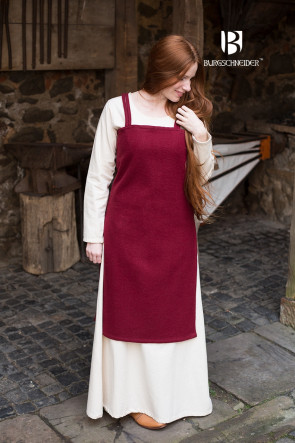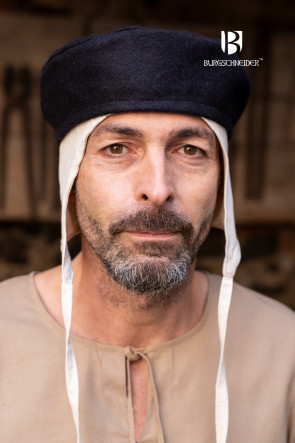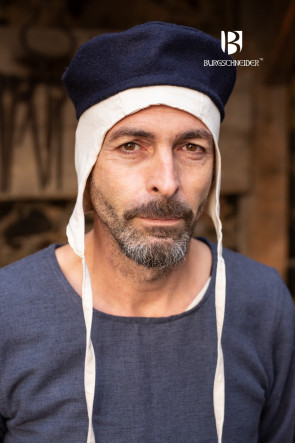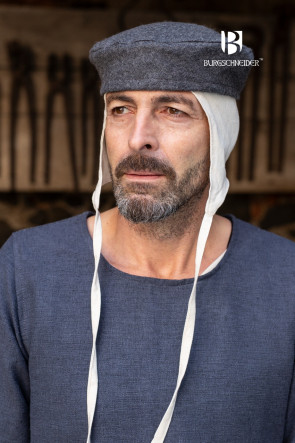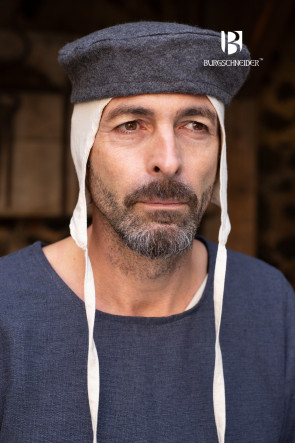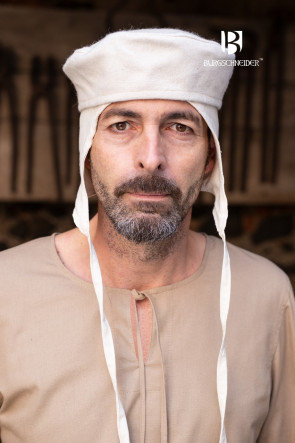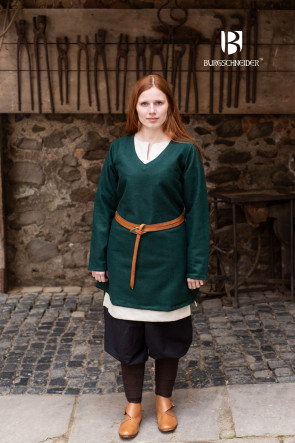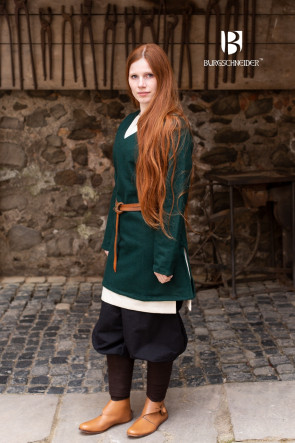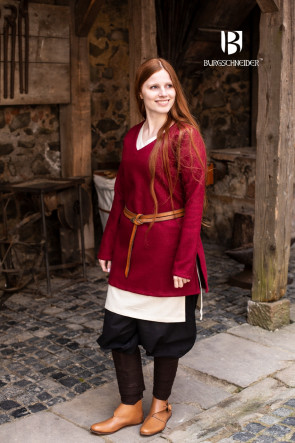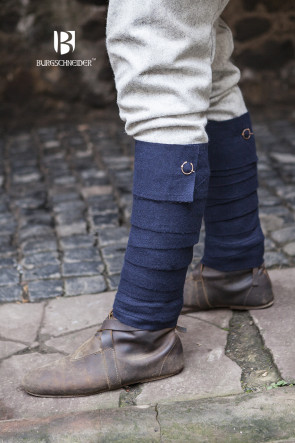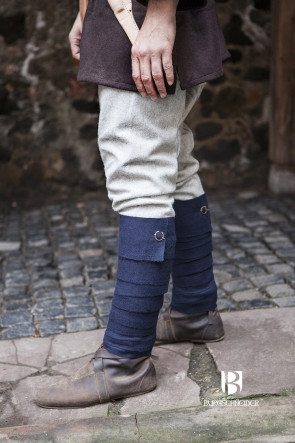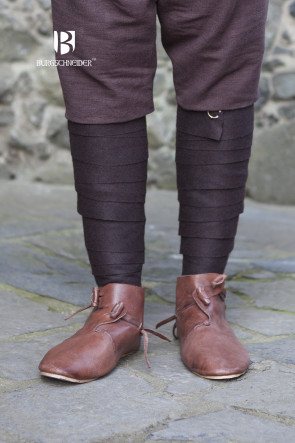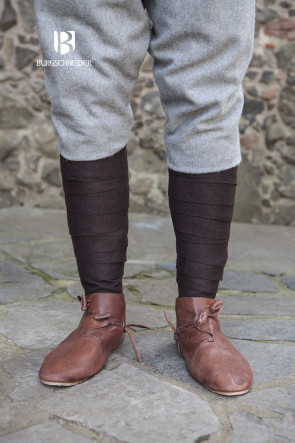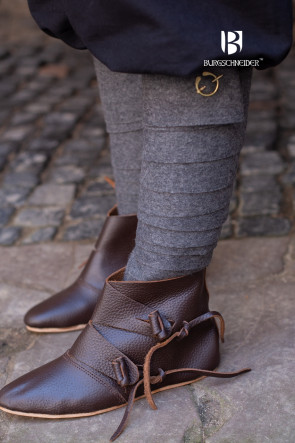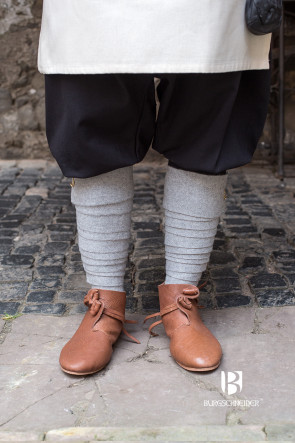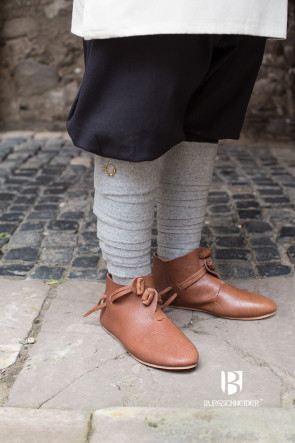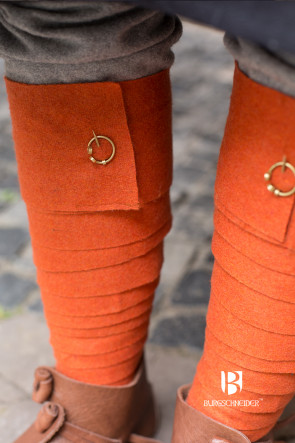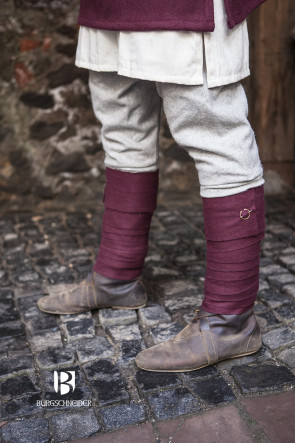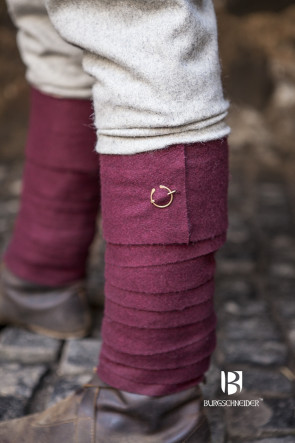Zwergenkostüm
In many fantasy stories—be they novels, videogames or movies—we encounter dwarves. Despite the countless backgrounds, there are some traits by which dwarves can always be recognized: the so-called positive clichés that allow the dwarf player to be identified without any need to explain character.
Dwarves are not necessarily diminutive, but they are smaller than the average human, stocky and brawny, with strong extremities. Another conspicuous feature is their well-groomed full beard, which is usually braided and adorned with metallic beads—and often, even female dwarves wear beards. Most dwarves also project a rather neat, tidy appearance. Just like the time-honored elves, dwarves usually enjoy great longevity and pride themselves on an ancient and exceptionally artisan cultural heritage that they preserve quite carefully.
Dwarves on adventures
In most fantasy worlds, dwarves have a reputation for being less than open-minded and adventurous. They are known to be a reclusive and grumpy culture, dwelling deep within mountains and subterranean tunnels. A dwarf needs a good reason to leave home and embark on an adventure—they are, however, greedy for gold and gemstones, and the prospect of plundering a dragon’s hoard could certainly persuade them to leave their mountain. Perhaps a dwarf is tasked to seek assistance as the mountain is being threatened by an evil power, has been rendered homeless, or even outcast.
Once a dwarf has joined an adventuring party, its members benefit from the dwarf’s toughness and frugality—not to mention the devastating axe blows of dwarven fighters, their expertise on gemstones, ores, and metals, and their proficiency in forging weapons and armor. Since dwarves serve as a bulwark against everyone foolish enough to engage the party in melee fighting, they can be considered the ‘hard-ass’ of the group.
What makes a compelling costume for a dwarf?
Because dwarves, in comparison to humans, are supposed to seem and act alien, a costume for a dwarf should also look exotic and unfamiliar. A compelling depiction of a dwarf can be recognized as such at first glance—and in order to achieve that effect, it’s worth taking a look at archetypically dwarven features:
Square cuts and clothes with “unflattering” lengths compress the silhouette and make the wearer look smaller. In order to effectuate the bulky stature, you can wear wide tunics and pants in numerous additional layers on top of each other, and by combining this with a broad, hooded collar or even pauldrons, beamy leather belts, chunky bracers, and an oversized hat, you create the typical dwarven silhouette.
Leather or metal adornments, while being chunky and heavy, are usually crafted precisely and exquisitely, featuring geometrical patterns with straight, clear lines, well-defined edges, and precise angles—such as borders with rhombs or hexagons. This way, dwarves distinguish themselves from elves, who favor flowing, leaf-like adornments.
-
Birka Coat Aslaug - Wool Brown
$95.99 -
Birka Coat Aslaug - Wool Grey
$95.99 -
Birka Coat Aslaug - Wool Red
$95.99 -
Cloak Justus - Wool Olive Green
$119.99 -
Herringbone Woven Tunic Tyr - Black/Grey
$85.99 -
Herringbone Woven Tunic Tyr - Burgundy/Grey
$85.99 -
Herringbone Woven Tunic Tyr - Olive/Grey
$85.99 -
Hooded Cloak Hibernus - Wool Autumn Green
$139.90 -
Hooded Cloak Hibernus - Wool Black
$139.90 -
Hooded Cloak Hibernus - Wool Brown
$139.90 -
Hooded Cloak Hibernus - Wool Green
$139.90 -
Hooded Cloak Hibernus - Wool Grey
$139.90 -
Hooded Cloak Hibernus - Wool Red
$139.90 -
Pants Wigbold - Brown
$59.99 -
Round Brooches Set Ingwaz
$35.99 -
Rucksack Capsus - Black
$35.99 -
Rucksack Capsus - Brown
$35.99Out of stock
-
Rucksack Capsus - Green
$35.99 -
Rus Pants Ivar Herringbone - Black/Grey
$79.99 -
Rus Pants Ivar Herringbone - Burgundy/Grey
$79.99 -
Rus Pants Ivar Herringbone - Olive/Grey
$79.99 -
Set Aki with Winingas and Brooches
$34.99 -
Short Tunic Frekja - Grey
$45.99 -
Short Tunic Frekja - Sand
$45.99 -
Tube Gugel Alex - Black
$23.99 -
Tube Gugel Alex - Brown
$23.99 -
Tube Gugel Alex - Green
$23.99 -
Undertunic Greta - Natural
$39.90 -
Undertunic Lagertha - Natural
$39.90 -
Viking Coat Loki - Blue
$85.99 -
Viking Coat Loki - Brown
$85.99 -
Viking Coat Loki - Dark Grey
$85.99 -
Viking Coat Loki - Red
$85.99 -
Vikingdress Jodis - Wool Autumn Green
$59.90 -
Vikingdress Jodis - Wool Red
$59.90 -
Wool Cap Hugo - Black
$18.99 -
Wool Cap Hugo - Blue
$18.99 -
Wool Cap Hugo - Grey
$18.99 -
Wool Cap Hugo - Natural
$18.99 -
Wool Tunic Hyria - Green
$75.99 -
Wool Tunic Hyria - Red
$75.99 -
Wool Winingas Aki - Blue
$23.99Out of stock
-
Wool Winingas Aki - Brown
$23.99 -
Wool Winingas Aki - Darkgrey
$23.99 -
Wool Winingas Aki - Grey
$23.99 -
Wool Winingas Aki - Orange
$23.99 -
Wool Winingas Aki - Red
$23.99







